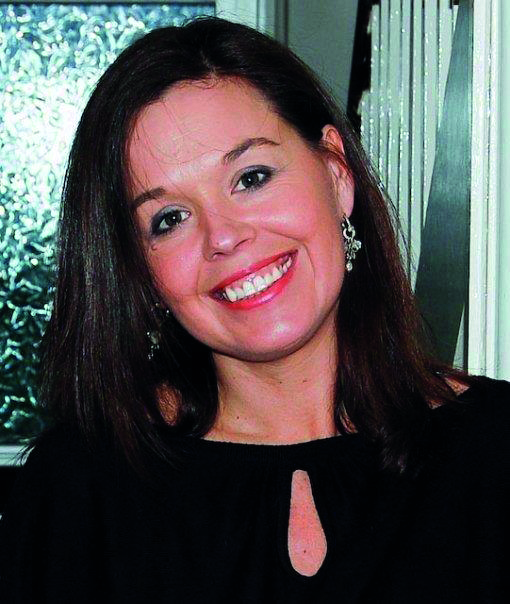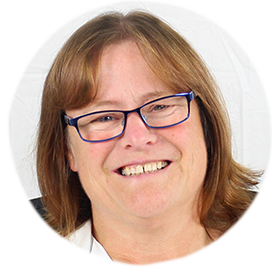TaxCalc Blog
News and events from TaxCalc
Thriving and surviving as business goes digital
With the lockdown continuing to ease, one TaxCalc customer reflects on the immediate and lasting changes of working from home and going digital.
The Covid-19 enforced lockdown in March saw firms across the country abruptly move their businesses from being office, to home-based.
For many of those firms that have already embraced the ‘Digital Revolution’, the transition to home working has been far smoother – and has also come some distinct advantages. Flexible working has resulted in improved productivity and, in many cases, staff morale. Also, firm location and distance is no longer a barrier to serving clients and has resulted in the provision of more responsive advisory services and improved client relationships.
The opportunities for growth post-lockdown are abundant. That’s according to the CWM Partnership, a Surrey-based accountancy practice that has been using TaxCalc products since 2005. As a longstanding customer, Christopher White, Principle and Head of The CWM Partnership , explained how the move to digital accounting and Cloud servers has proven invaluable during the COVID-19 pandemic.
Like TaxCalc, The CWM Partnership is a family operation. What did the news of the national lockdown mean for the business and the way it functions?
We were fortunate in the fact that we had moved everything to the Cloud last year as part of a planned migration. This effectively meant that we were able to iron out all the teething issues during 2019. When lockdown became more of a reality, there was no fear that we would be unable to work, because by then everything had been tried and tested.
Our team was set up with monitors at home, and using Microsoft Teams, we simply learned and adopted a new form of communication. In terms of our day to day work, the change has been seamless. The technical side has not given us any problems.
How did your firm make the move to digital in 2019?
I have always believed in updating our IT plans in an organic manner as opposed to having a new broom and sweeping clean, which can create a shock in an office environment. We always introduce new technologies gradually; our plan was for staff to get used to one change at a time. Once we had all our software in place, the next step was addressing our physical servers, which were vulnerable points of the business. We decided to go Cloud-based, and I would never go back to having a standalone server.
What does your technology toolkit look like today, and how does TaxCalc fit in?
We use TaxCalc primarily for corporate and personal tax returns, as well as it being the hub of our practice management systems. We have been using TaxCalc since 2005, and there has never been a reason to change. We are creatures of habit, and I believe TaxCalc understands the way that we work—it has always felt right and the software fits into the logic of how we at CWM operate.
The main change is that we are no longer reliant upon the one main server. In the past, we would still be reliant on that server functioning even if we were working from home with remote desktops. Rather than being able to restart it remotely, someone would have to be there to physically solve any issues, and that way of working just brings so much additional and unnecessary worry. The ability to take away all of those nagging worries was a primary driver in our move to go Cloud-based.
Did you have any concerns about how the level of support from your software providers may be impacted by the lockdown?
Initially, I did have some concerns that there may be some delays in dealing with any IT issues that arose as a result of people not being in the office. However, I don’t think there has been a single time where I have noticed any drop-off in support with TaxCalc—it has been brilliant. Had all this happened 20 or 30 years ago it could have been a different story for us all, just because of the lack of technology available.
How did the move to home working impact the way you communicate with your customers?
The way we interact with clients certainly saw some change. The biggest change was that it had almost become a tick box exercise for our clients’ accounts, tax, VAT and payroll. That changed when, from the start of March, our phones would be ringing non-stop. Those calls quickly became Zoom meetings, and my day-to-day work rapidly went from being 90% working on accounts and 10% on the phone, to performing a 100% consultancy role. We were effectively fire-fighting the situation for our clients, using the experience we learned during our training that perhaps had not been required for some time previous. It presented the opportunity to showcase our skills and capabilities, and essentially became mentors for many clients.
Embracing digital tools has led you to maximising the use of social media. You even launched a series of YouTube videos during the early stages of lockdown. What was the idea behind this?
It quickly became apparent that we were having the same conversations with clients, often around the ‘bounce back’ loan schemes. To save both our team and our customers some time, I essentially became a ‘YouTuber’ in order to point our clients in the right direction before having more of an in-depth chat.
We found social media invaluable with regards to communicating with our clients, because there simply was not enough time to spare. These are conversations that deserve more than just a five minute chat, and so those videos provide a bit of background as a starting point. Our clients have really engaged with this, and it is likely something that we will continue moving forward.
Will any other working practices that were put in place during lockdown remain once things return to normal?
I think there are certainly elements that will remain. Our physical presence in the office has changed, even if the office is our base, we have the tools, as well as the awareness now that we do not have to be in the office. We had moved to TaxCalc’s Cloud-based system last year, which is at the heart of the practice. Everything has worked very well, and the IT side of our business did not pose a problem during lockdown.
The one downside of remote working is the ability to work more as a team—for some things it’s just not as easy as it would be in the office. For example, junior members of staff need a certain level of training, and this cannot be done in the same way through a video link. The office has its place, but we know that we can do the same job at home, and over a long period of time without any major impact on the business. I believe this is also important as concerns rise over a ‘second wave’ of the virus.
Obvious disruptions aside, would you say there are any positives to have come from the lockdown from a business perspective?
We have almost become an unofficial finance director, even with some of our larger clients. Many of our clients are looking to us for a higher level of consulting, and I believe that will continue in the future. We have also had a significant number of new client referrals over the last few months—we’ve averaged one or two new referrals each week.
With the help of the government, many in this space are also trying to grow their businesses. Ironically, some of our clients have more cash flow than they did before, and could not have gone to the bank for a larger loan beforehand. If that money is available, businesses will look to grow their staff and invest for the future.
We have also had a growing number of start-ups coming through, and I believe there will be a lot of new self-employed businesses that will launch off the back of the lockdown.
How do you anticipate businesses in this sector to adapt post COVID‑19?
There has been a real change in mentality. When this all started in March, every single conversation with a client was one of fear and worry that their business was about to be destroyed. Even from my perspective, there was a fear that our clients may go out of business, and that we would see a contraction in our client base in 2020.
Today, I can honestly say that most of the conversations with our clients are in fact very positive. It is unavoidable and upsetting that some businesses may go under, but there is so much potential new growth that we are seeing, and I now come away from customer calls with a feeling of optimism.
Going on much of the business reporting in the media, the move to flexible, remote working is likely to be a viable solution for many, even after things return to normal. Will you retain remote working practices and methods of communication?
The views shared within this interview are those of CWM, and are not affiliated with TaxCalc in any way.






